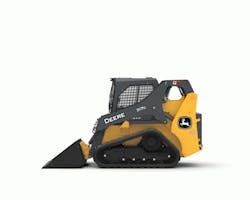Digital Design Aids CTL Safety
Before a compact track loader design is finalized, some manufacturers use virtual renderings and 3D printed structures to get a “feel” for what visibility inside the cab might look like. ASV, for example, uses “model” operators to observe virtual renderings of its cab design before creating a physical structure. The team then uses the person’s real time perspective to make adjustments within the virtual cab.
Once the smaller details are worked through, ASV builds a physical model of the CTL cab using cardboard and 3D printed parts.
“Now we have an actual operator in it to tell us what needs slight refinement,” says Buck Storlie, ASV. “[The operators] started finding that within the actual application certain parts of the loader, or a particular hose, or a particular bolt, were slightly in the way. So we actually started redesigning the machine around that cab.”
ASV says if the technology wasn’t available alongside the ability to build prototypes quickly, it would be difficult to achieve timely, successful results.
“You can kind of hit the print button, and spit [a part] out in a plastic model,” he says. “Maybe at a later date, that’ll be a steel part or a casted part, but you can 3D print it first and make sure it works.
“It’s all about rapid prototyping. Years ago a prototype could take weeks, months, years to develop. Now you can print one out and have it tested that day.”
John Deere’s CTL cabs also allow operators from inside to have clear sightlines to all critical areas from a 360-degree perspective.
“We use virtual reality to test visibility and customer experience to evaluate placements when designing our equipment,” says Luke Gribble, solutions marketing manager, John Deere. “We have ensured that our CTLs provide clear sight under the boom arms to be able to see the tracks and tires, even when the boom is down.”
Deere’s Gregg Zupancic, product marketing manager, says the company checks in with customers at least three times over the course of machine development. In one of the phases, customers are invited to view its CTL design in virtual reality.
“Customers can move the machine around a little [too],” he says. “They can raise and lower their bucket and boom arms, and then they’ll look at certain points, like where the tires or tracks are out the side window. We can hear that feedback and adjust our linkage at that point.”
Once the company reaches alignment with customers on the virtual phase, they put the design into steel, and bring customers back for a final test.
